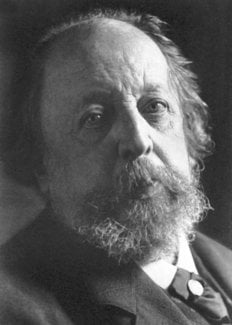Paul Heyse
Biographical

I was born in Berlin on March 15, 1830, the second son of the royal university professor K.W.L. Heyse and his wife Julie, née Saaling, who came from a Jewish family. After attending the Gymnasium between my eighth and seventeenth years, I studied classical philology at Berlin University for two years under Boeckh and Lachmann, and with the friendly support of Emanuel Geibel and Franz Kugler I dabbled in all sorts of poetry. In Bonn, where I studied for a year, I changed from classical to Romance philology, taught there by its great founder, F. Diez, and at the beginning of 1852 I received the doctorate for a dissertation on the refrain in Provençal poetry. In the autumn of the same year I went to Rome on a grant by the Prussian Ministry of Culture. For a year I stayed at various Southern places, continuing my Romance studies at Italian libraries. The findings were published by W. Hertz in 1856 under the title Romanische Inedita.
The year 1853 yielded even greater results in creative writing. In the spring of 1854 some of my publications persuaded King Maximilian II of Bavaria to offer me, at the suggestion of Emanuel Geibel, a position in Munich with an annual salary of 1000 guilders, to take part in his so-called symposia, weekly soirées at which scholars and poets were gathered. Before I moved I was married to Kugler’s daughter Margarete, whom death took away from me in the autumn of 1862 after she had borne me four children. Five years later I married a young woman from Munich, Anna Schubart, with whom for forty-four years I have lived happily, except for the premature deaths of two children and a son from my first marriage.
I have given a detailed account of the first four decades of my life until the death of my dear royal patron in my Jugenderinnerungen und Bekenntnisse (Berlin, 1900) [Memories of my Youth and Confessions]. From that time on outward events receded; my life has passed without particular events or adventures and has been devoted entirely to writing. Here is a list of books published by the Cotta Publishing House:
Gesammelte Werke (1871-191O) [Collected Works], 36 vols.; Dramatische Dichtungen (1864-1905) [Dramatic Works], 36 vols.; Romane, Novellen, lyrische und epische Gedichte (1902-1912) [Novels, Novellas, Lyrical and Epic Poems], series I, 12 vols.; series II, 40 vols.; Italienische Dichter seit der Mitte des 18ten Jahrhunderts: übersetzungen und Studien (1889-1905) [Italian Poets since the Middle of the I8th Century: Translations and Studies], 5 vols.
Published by other publishers: Deutscher Novellenschatz (1871-76) [Treasury of German Novellas], 24 vols.; Novellenschatz des Auslands (1872-76) [Treasury of Foreign Novellas], 14 vols.; Neuer Deutscher Novellenschatz (1884-88) [New Treasury of German Novellas], 24 vols. Also, a translation of José Caveda y Nava’s history of Spanish architecture, Geschichte der Spanischen Baukunst (1858).
Biographical note on Paul Heyse
Paul Heyse (1830-1914) was made a nobleman by the King of Bavaria in 1910. His complete works were published in fifteen volumes in 1924, ten years after his death.
This autobiography/biography was written at the time of the award and first published in the book series Les Prix Nobel. It was later edited and republished in Nobel Lectures. To cite this document, always state the source as shown above.
Paul Heyse died on April 2, 1914.
The Nobel Foundation's copyright has expired.Nobel Prizes and laureates
Six prizes were awarded for achievements that have conferred the greatest benefit to humankind. The 14 laureates' work and discoveries range from quantum tunnelling to promoting democratic rights.
See them all presented here.
